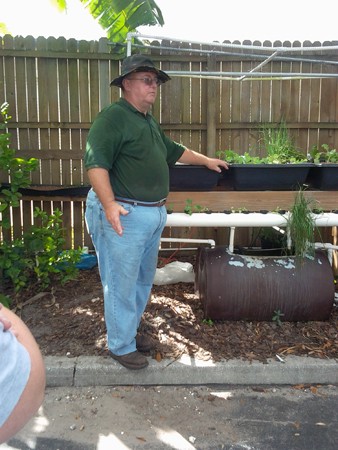
Project News
We are always adding different growing methods and researching new and better ways to utilize our Aquaponics knowledge so as to increase the range of what we can grow. I wanted to be able to use some soil in Aquaponics and be able to grow root vegetables while re-circulating the water. In future posts, I will highlight some of our methods and components as to one step we have taken towards this. Here I am sharing a article by my good friend and fellow Aquapon David Hart.
Enjoy!
God bless, Sahib
Hi guys and aquapon ladies… 
We’re trying something new. If you’ve tried growing any root crops in aquaponics, this might be of interest. This way, we might just end up with ‘staight carrots’… 
We removed some shallow water culture troughs from one of the systems. Not because they didn’t work, they actually worked very well. The problem was, that they were above a deep water culture bed. As the sun went higher in the sky during the summer, they started to cast too much shadow onto the lower bed.
This wouldn’t of been a problem ‘if’ the beds ran North and South, but they don’t, ours are set East to West. Since we are using wasted space in a shopping center, we don’t have a lot of options on our lay out.
Here’s a shot of the troughs new location….

You can see we have them up on one set of blocks. This helps to get the drain back to the sump. The sump is to the right of the picture. It’s about 20 feet to the sump.
The pipe on the fence is the supply line.
Here’s a few shots of the new set up…
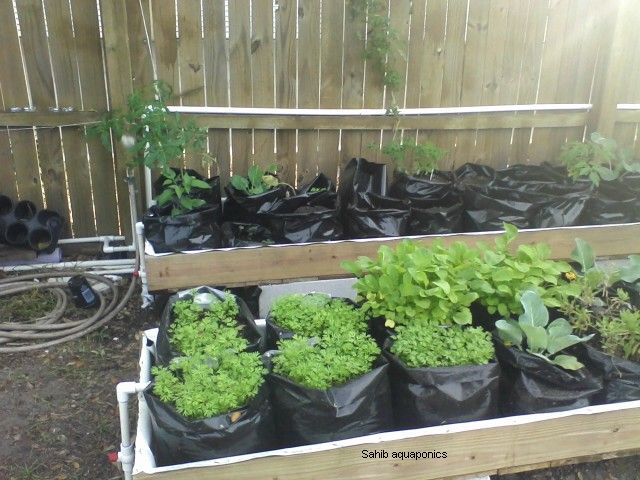
In the fore ground above….That’s five different kinds of carrots, beets and radishes.
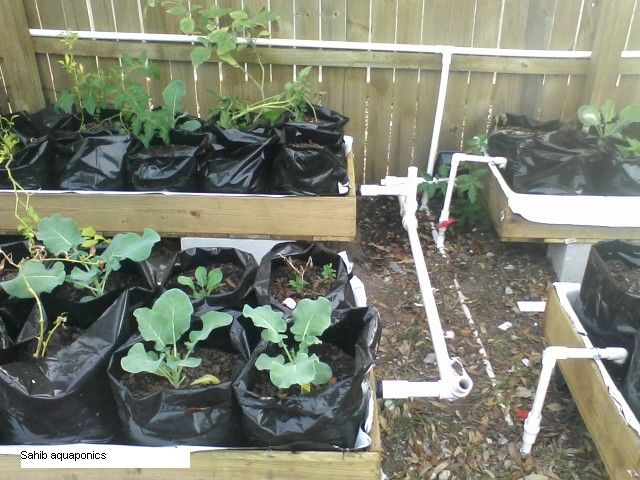
We ran a supply line to each one, with a ball valve to control the flow. Each bed has a drain, which ties into a common header.
The bags are poly grow bags. I think they are a 5 gallon size (Maybe 4 gallons ?) They come with holes already in the bottom and part way up the sides. The bags are filled with a potting mix. Regular soil wouldn’t ‘wick up’ as well and the roots wouldn’t get as much oxygen.
The water in the troughs, is just less then an inch.
The system feeding the grow bag troughs, is our catfish system. It only has 1 IBC with about 18 very large channel cats. You can see the tank in the background of the next picture.
The 3 bell siphon tubs are fairly new too. The water exits the IBC, by the way of a SLO drain. The tubs drain back to the sump.

I hope this gives everyone some ideas….. 
Your aquaponic carrots really can be straight….. 

Project News
Recirculating farms – systems that use naturally cleaned, recycled water – are growing fresh vegetables, fruits, herbs and fish for Florida families, so they can eat well, even in tough economic times.
Winter Park, Florida (PRWEB) August 08, 2012
The paved alley behind the Winter Park Commerce Center strip mall does not look like fertile farmland. But there, urban gardener Sahib Punjabi grows an abundance of lettuce, peppers, tomatoes, and more, all with the help of water and fish, instead of soil. Sahib’s Aquaponics Research Farm — or as he calls it, his “living food jungle” — is one of many new farms and training centers cropping up, literally, in central Florida. These innovative operations provide not only fresh, local produce but also economic opportunities for Floridians affected by the financial crisis.
Aquaponics is a type of recirculating agriculture, an eco-friendly method of farming that uses naturally cleaned, recycled water in place of soil. It combines aquaculture, or fish farming, with hydroponics, where plants grow in nutrient-rich water. Fish waste provide organic nutrients for the plants, and the plants in turn clean the water for the fish. The result is a closed-loop, symbiotic system that grows food without depending on pesticides or other chemicals. Aquaponic farms can range in size from large, commercial ventures to small, desktop systems that grow herbs, lettuces or certain vegetables
Another Florida resident turned aquaponic farmer is Gina Cavaliero, former co-owner of a once-successful contracting business that foundered when the housing market collapsed. “The faucet just turned off,” Cavaliero remembered. “We’d recently been introduced to aquaponics, and thought that growing food would be recession-proof — people have to eat.” Today, Green Acre Aquaponics, a commercial farm and consulting company located in Brooksville, is thriving. According to Cavaliero, more than a hundred people participated in their most recent aquaponics training sessions, eager to learn how to grow food for their own use and for sale to local restaurants and markets.
What is attracting so many new people to this way of farming? “One big advantage of an aquaponic farm or garden is that it can be built virtually anywhere — indoors, on rooftops, or in urban lots where soil is paved or otherwise not fit for growing food.” noted Marianne Cufone, Executive Director of the Recirculating Farms Coalition, a collaborative group that supports farms and farmers. “That means just about anyone can have an aquaponics system and enjoy fresh, sustainably grown food.”
Helping families grow their own food is the mission of Aquaponic Lynx in Yalaha. Owner Aleece Landis provides equipment, consulting services, and training to individuals who want an aquaponic system at home. She sees aquaponics as a great benefit to families. “It’s an easy way to garden and grow your own food,” Landis explained. “You don’t have to remember to water or fertilize the plants. You just have to feed the fish, and you’ll have fresh, healthy food available when you want it.”
Sahib Punjabi believes that home-growing food helps save on grocery bills and improve health. “There are health benefits to adding vegetables to your diet, and to not eating pesticides,” he said. “There is also the pleasure of working with nature and seeing something grow — it’s a wonderful stress relief.” He feels a healthier diet and less stress means a substantial savings in health-care costs over the long term.
For Gina Cavaliero, individual health benefits and savings are just part of aquaponics’ potential benefits. She sees aquaponics as part of a revolution. “If we can get a decent resurgence of the small family farm, we can feed more people local, clean, chemical-free food — and create jobs in the process.” For Florida families affected by diet-related health problems and the economic downturn, that is a win–win proposition.
For more information on aquaponics and other types of recirculating farming, including tips on building your own system, visit http://www.recirculatingfarms.org.
Read more at http://www.virtual-strategy.com/2012/08/08/recirculating-farms-help-florida-families-through-tough-economy#RcRD5v8Ke6HwJSSp.99
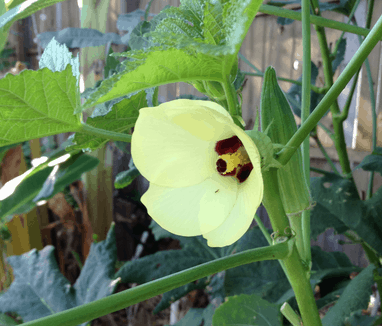
Project News
Sahib Aquaponics : What shall we grow today?
Okra – aka “Ladies Fingers”, “Kingombo”, “Gumbo” and “Bhindi”
During the last two years or so, I have found that you can grow almost any vegetable and plants that you choose to in Aquaponics. You may need to adapt the grow beds and practice hybrid aquaponics as I do to increase your range of products. I have successfully grown broccoli, carrots, eggplants, daikon and radishes, fennel, fruit trees, kohlrabi, herbs, okra, onions, pumpkins, marrows, gourds, tomatoes, strawberries, peppers – hot & sweet just to name some. I have also seen others grow corn and some even sweet potatoes via wicking beds. One really needs to expand their horizon and realize that there are really very few items that will not grow well in Aquaponics systems. Yes there are a few items that are just not cost effective at present such as grains and rice. There is research being done on these products and I am sure that very soon these too will become economic to grow via Aquaponics means.
Today I am going to write about one of my wife’s favorite items that we grow at Sahib Aquaponics, Okra. We call it by the Hindi/Urdu Name Bhindi. This much loved vegetable is a favorite of many and is usually grown in hot weather, one of the few that does not wilt and die as the temperatures rise. The green pods when cooked release a “goo” or slime which is considered by many to be beneficial to health. Okra can be eaten raw, boiled, fried, sautéed, stir fried, stuffed, and included in stews. The leaves can also be eaten, usually in salads.
Okra plants can grow up to 9 feet tall and with uncut Okra fruit, can weigh a lot hence they are not good candidates for “raft” Aquaponics. They are better suited to deep media beds preferably containing 3/4inch rocks. Grow them direct from seed and avoid the transplant shock. Although I have grown a hybrid variety from saved seeds, I do prefer to grow the “Clemson Spineless”. Each plant may only have one or two Okra pods maturing at any one time and you should pick these often. Try to pick the pods when they are 3 to 5 inches, although I must confess that in Aquaponics, they tend to grow that almost every day! If I forget to pick them for a couple of days, they have grown to 10 to 11 inches tall and fat as a cucumber. Hat is not always a good idea as letting them grow to a larger size tends to make them woody and lose their taste. My Aquaponically grown Okra are honestly the very best tasting “Bhindi” that I have ever eaten. When planting Okra you do need a lot of room as you should plant a number of plants if you would like to be able to harvest enough pods for a meal once or twice a week.
You can eat Okra right off the plants or cook them in numerous ways. They can also be frozen or pickled. You can cut them in ¼” to ½” pieces and stir fry then with onions and spices, or coat them with seasoned corn meal and deep fry them. They can be stuffed with spices, other stuffing or even cooked ground meat and then stir fried. Gumbo is another way to eat Okra. In order to get the maximum health benefits of Okra, try to avoid over cooking it and avoid deep frying. Okra is an excellent source of many nutrients such as Vitamin A, Vitamin B6, Vitamin C, Calcium, Copper, Iron, Potassium, Magnesium, Niacin, Zinc as well as containing Folic Acid. It is considered a weight loss food with optimum health benefits. The fibers found in Okra are supposed to help stabilize bold sugar, improve the functioning of the intestinal tract and help provide the body with good bacteria for the digestive system.
I have found the following web article on Okra to be helpful and am sharing it with you http://www.neurophys.wisc.edu/ravi/okra/ It also contains some recipes. I will request my daughter to include some Indian Bhindi recipes on her Blog www.lovelaughmirch.com
Okra!
“Is it profitable?”
In Pure Economics 101 terms, it all depends! If you live in very hot climates like Central Florida, your choice of produce to grow for market is limited during the hot summer. If you have the space and the appropriate Aquaponics set-up, growing Okra during the hot season and provide you with a stream of income that was non-existent during this hot period of the year. If you had a fifty foot long by 4 foot wide media filled grow bed area, so 200 sq. ft. space, you should be able to plant at least 120 plants – spacing them 12” to 15” apart. Once they start to produce fruit, you should be able to harvest approx. 30lbs to 40lbs weekly. Organic Okra, if available (and you know as you will hopefully educate your customer that Aquaponically grown is much superior), was selling for $2.99-$3.50/lb at the local farmer’s market. Say if you have a 20 week production harvest that could result in $3,000.00 plus additional income. Not as much as one could earn if growing tomatoes or green leafy veggies. However you could not grow them in this hot climate without some serious climate control environment! By the way, you can still grow basil, mint, hot peppers and gourds / melons in the open space of the media grow beds thus further add to you farm income.
As to whether it is “profitable” from a health point of you, this is going to be your decision. Let me help you a little. Growing them by aquaponics means ensures that you are assured the best natural taste. As I was quoted in the recent article in Cornell University Small farm Program Newsletter – the Urban Gardening section “This was a far superior way to grow it locally, grow it naturally, without having to resort to harmful pesticides and fertilizers and such, because if I did, my fish would die.” I have listed just some of the health benefits of Okra. Do you know, this is one vegetable that is so valued in Indian cuisine that had resulted in India becoming the largest grower of Okra. Ayurvedic medicine states numerous health benefits of eating Okra. Here is another link detailing information on Okra as a “Body Cleanser” http://www.ehow.com/about_5471466_information-okra-body-cleanser.html
In future “What shall we grow today?” article’s I will write about some of the vegetables mentioned above as well some other less known such as Bitter Melon (Kerela), Fenugreek (Methi), Malabar Spinach and Moringa (Drumsticks). Please let me know if there are any vegetables you would like to grow in Aquaponics and know more about them.
http://nutritiondata.self.com/facts/vegetables-and-vegetable-products/2497/2
God bless
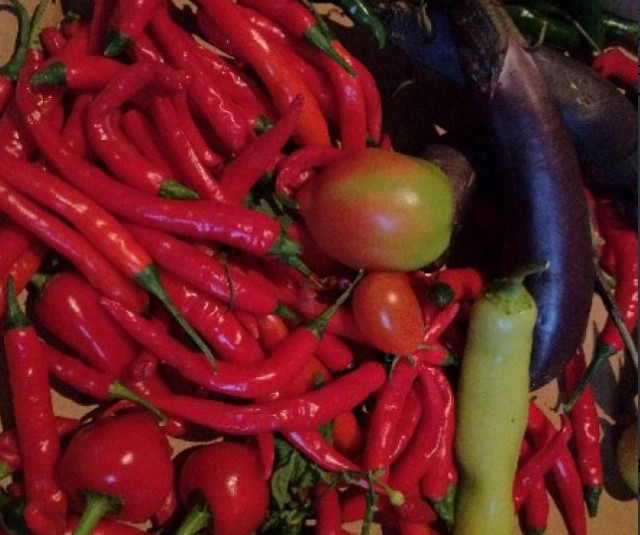
Project News
Sahib Aquaponics – What shall we grow today?
Hot Peppers
A question that I am often asked is “Other than the lettuces and leafy greens, what else can you grow in Aquaponics?” That is then followed by, “Is it profitable?”
During the last two years or so, I have found that you can grow almost any vegetable and plants that you choose to in Aquaponics. You may need to adapt the grow beds and practice hybrid aquaponics as I do to increase your range of products. I have successfully grown broccoli, carrots, eggplants, daikon and radishes, fennel, fruit trees, kohlrabi, herbs, okra, onions, pumpkins, marrows, gourds, tomatoes, strawberries, peppers – hot & sweet just to name some. I have also seen others grow corn and some even sweet potatoes via wicking beds. One really needs to expand their horizon and realize that there are really very few items that will not grow well in Aquaponics systems. Yes there are a few items that are just not cost effective at present such as grains and rice. There is research being done on these products and I am sure that very soon these too will become economic to grow via Aquaponics means.
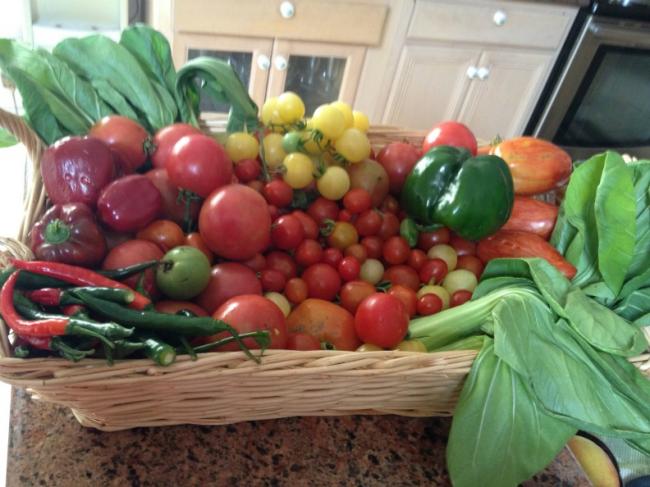
Today I am going to write about one of my favorite items that we grow at Sahib Aquaponics, part of the hot pepper family – Cayenne Peppers. In future posts I will write about other items that we successfully grow in our hybrid aquaponics systems and provide some information as to the benefits of consuming such and recipes of how we cook with them.
Cayenne Peppers!
“Is it profitable?” Really!
Let me answer the question “Is it profitable?” first in pure economics terms. According to recent articles (April 17, 2012), “The Top Ten Fastest-Growing Industries in America”, and and “The Hot Sauce Treadmill”, Hot Sauce Production is part of this group! I use a variety of chili peppers (also known as “Mirch” in India), especially Cayenne, in virtually all my cooking and will always have hot sauce handy. Today there are numerous hot sauces on display at various eating establishments. Just look at the supermarket isles when you next visit. This trend is expected to increase as our tastes change and adapt to more of an international cuisine and we build a tolerance to the capsaicin-rich foods. The market is expected to grow close to 5% annually, so yes, growing Hot Peppers can be economically profitable. Growing them by aquaponics means ensures that you are assured the best natural taste. As I was quoted in the recent article in Cornell University Small farm Program Newsletter – the Urban Gardening section “This was a far superior way to grow it locally, grow it naturally, without having to resort to harmful pesticides and fertilizers and such, because if I did, my fish would die.”
As to whether it is “profitable” from a health point of you, this is going to be your decision. Let me help you a little. I am sure that you are aware of the toxic effects of eating food that has been grown by using harmful pesticides and chemical fertilizers. Growing Chili peppers in Aquaponics, whether Cayenne or one of the other 400 varieties, eliminates the harmful pesticides or chemical fertilizers so prevents this source of toxins to your body. There is considerable research available to you as to the health benefits of eating chili peppers. Cayenne peppers are being used to cleanse and detoxify the digestion system, stimulate blood circulation as well as reduce & naturalize acidity in the body. They are considered to be anti-inflammatory and have “been used for a variety of diseases and ailments including heartburn, delirium, tremors, gout, paralysis, fever, dyspepsia, flatulence, sore throat, atonic dyspepsia, hemorrhoids, menorrhagia in women, nausea, tonsillitis, scarlet fever and diphtheria.” Dr. Edward Group -17 Health Benefits of Cayenne Pepper. They also have excellent nutritional value. “Red chilies contain high amounts of vitamin C and carotene (provitamin A). Yellow and especially green chilies (which are essentially unripe fruit) contain a considerably lower amount of both substances. In addition, peppers are a good source of most B vitamins, and vitamin B6 in particular. They are very high in potassium, magnesium, and iron. Their high vitamin C content can also substantially increase the uptake of non-heme iron from other ingredients in a meal, such as beans and grains.” Now you can see why chili peppers are considered as being an essential item in good health, part of the “Spice of Life” club.
I like the taste of Cayenne peppers so have a preference to using them often. We eat them fresh in salads or add them to my food (green or red), as well as dry them for use later, either as whole or powdered. Indian food just would not taste as good without adding chili peppers (mirch). My daughter has even named her food blog “Love Laugh Mirch”. Now I realize that eating chili’s can be difficult for many who have never had any hot spice added to their food. All I can suggest is, try to add a little hot sauce or fresh chili pepper (remove the seeds at first), to your food. You will soon really start to enjoy the sensation and crave for more. Pretty soon, you too will be advocating their use and growing as many of them as possible. Welcome on board
[nggallery id=10]
I was surprised to discover that chili peppers did not originate in India as Black Pepper (also known as “Black Gold”), but in the Americas. Christopher Columbus is credited as being one of the first Europeans to encounter them and called them “peppers” as they tasted spicy and hot, unlike any other food. He thought that he had reached India by sailing west in order to prove that earth was round. How the Chili Peppers travelled to India is still being debated, whether by Portuguese traders, Muslim merchants or Chinese silk merchants. Once they arrived in India, they were welcomed and became part of everyday food and being used in Ayurveda medicines.
In future “What shall we grow today?” article’s I will write about some of the vegetables mentioned above as well some other less known such as Bitter Melon (Kerela), Fenugreek (Methi) and Moringa (Drumsticks). Please let me know if there are any vegetables you would like to grow in Aquaponics and know more about them. You can contact me at sahib@sahibaquaponics.com.
God bless
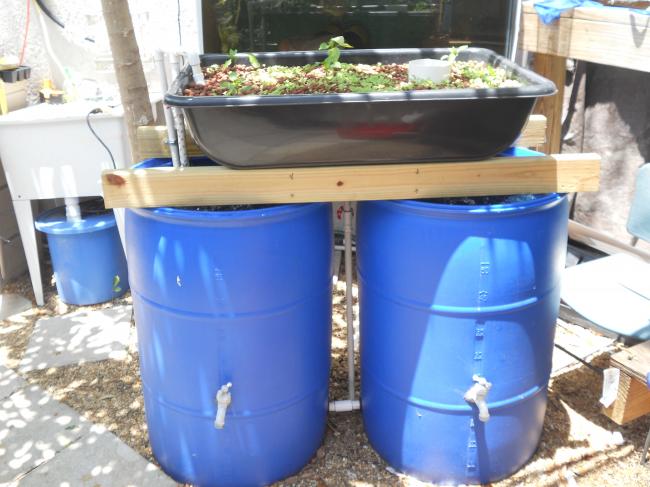
Project News
Sahib introduces an Aquavermiponics System
Sahib introduces an AquaVermiponics system in order to have a quality supply of ‘casting tea”, also known as “compost tea” always available for foliar spray for his Aquaponically grown plants and produce. So what is Aquavermiponics?
Aquavermiponics is the combination of Aquaculture, Hydroponics and Vermicomposting. How Vermicomposting is added to Aquaponics can vary to some extent as to the need for the particular application. Why add Vermicomposting to the better than organic method of growing food using Aquaponics? To answer this one has to know a little about both Aquaponics as well as Vermicomposting. In Aquaponics, there can be no harmful pesticides or chemical fertilizers added to the system. Even products that are approved for use in organic gardening can result in disastrous consequences if added to an Aquaponics system. Take Neem Oil as an example.
Being from Indian Ancestry, naturally I am familiar with the many beneficial qualities that Neem Oil offers such as being a natural insect repellent and a safe pesticide that is organically approved. It has been found to be effective in controlling such pests as white flies, aphids, scales, mealy bugs, spider mites, locusts, thrips, and Japanese beetles. Neem Oil is also biodegradable, breaking down quickly and it is also considered to be non-toxic to mammals, birds, bees or earthworms. Neem Oil is certainly a wonderful product in organic gardening if used correctly.
Severe caution: Do Not Use Neem Oil in Aquaponics! Foliar spraying Neem Oil, while helping you control the pests mentioned above could result in the death of all your fish. Why risk such?
So I was looking for an alternative foliar spray product that would not only help in controlling the pest issues but also help in providing additional nutrients and trace elements to the plants growing in our Aquaponics systems. We have been spraying Maxicorp with iron on occasions as well as Vermicompost tea with excellent results. We do not always add the worm castings directly to our media beds (we may if they are wicking beds), but prefer to use foliar spray. Why? We had read and do believe that plants absorb the beneficial aspects far quicker as a result of foliar spraying. As every sustainable urban farmer knows, Vermicompost is a wonder product in the world of agriculture. It use is increasing rapidly as the numerous benefits are being shared with each other. Here is some information as well as the source:
Castings contain: 5 times the available nitrogen, 7 times the available potash and 1 1/2 times more calcium than that found in 15 cm of good top soil. Therefore, castings are supplied with available nutrients. The nutrients are also water soluble and immediately available to plant life. You will find that most potting soils have nutrient life of 2-5 days, where worm castings will last up to 6 times as long as other types of potting soils. You will need 5 times as much potting soil to do the same job as the worm castings. So, in the long run, worm castings are much cheaper and do a much better job. Also, castings hold 2-3 times their weight in water. That means you water less and the pot will stay damper for a longer period. Worm castings will not burn your plants; unlike using any fresh raw manures (cow, horse, etc.) which can burn root systems if it is not applied properly. The advantage of using castings is the manure passes through the worms' digestive system producing rich organic plant food and a slow releasing fertilizer that allows for better growth. Kids for Landcare: Wormwatch, Education Department of South Australia, 1992, p. 35.
A worm casting (also known as worm cast or vermicast) is a biologically active mound containing thousands of bacteria, enzymes, and remnants of plant materials and animal manures that were not digested by the earthworm. The composting process continues after a worm casting has been deposited. In fact, the bacterial population of a cast is much greater than the bacterial population of either ingested soil, or the earthworm's gut. An important component of this dark mass if humus. Humus is a complicated material formed during the breakdown of organic matter. One of its components, humic acid, provides many binding sites for plant nutrients, such as calcium, iron, potassium, sulfur and phosphorus. These nutrients are stored in the humic acid molecule in a form readily available to plants, and are released when the plants require them. Mary Appelhof, Worms Eat My Garbage, 1982, p.68.
Worm Castings also contain trace minerals, such as small amounts of Phosphorus and Potassium, Iron, Calcium, Magnesium, Sulfur, Boron, Copper, Zinc and Manganese. There are two ways to obtain the solution, what we call “compost tea”, for the foliar spray. One is to brew the compost tea by merely soaking a bag of worm castings in water for some time and using this spray solution, a weak “compost tea” – the extracted method. The other, and one that I prefer, is known as the “aerobically” method.
In the brewing method, compost/castings are placed into a container of circulated and aerated water (via an air bubbler or similar system) typically with other nutrients. The circulated water extracts the microbiology and the microbes are in an abundance of both oxygen and nutrient to feed upon. In this method, colonies of microbes are brewed in exponential numbers, a colony of bacteria for instance can double in population every 20 minutes. Aerobic brewing takes longer than basic extraction with common brewing times of 12 to 24 hours. Brewing time is very dependent on water temperature with warmer water creating faster brews. Aerobically brewed teas have much higher microbe population densities than extracted teas and for this reason are the tea of choice. The sign of a good aerobically brewed tea is a good head of foam and scum on top signifying healthy microbe action! https://www.yelmworms.com/compost-tea/page3.htm
As we have increased the growing area in our Aquaponics research farm, we require an increased quantity of the aerobically brewed compost tea. This compost tea takes at least a couple of days to make and only has a limited shelf life (try use within 12 hours if possible). We have designed an Aquavermicponics system that will ensure that we will have the aerobically brewed compost tea available on hand at all times. In our system, we can also experiment by adding such wonderful natural products as Molasses, thus adding additional nutrients for excellent and robust natural plant growth. Prior to using such this incredible powerful and magical “Sahib Compost Tea”, one could add just a few drops of “hot sauce” and/or cinnamon juice extract so as to increase the potency of the solution. Do remember that you should only spray when temperatures allow and when not harmful to beneficial insects such as honey bees and lady bugs. Here are a few pictures of our Sahib’s Aquavermiponics system. We have added a media bed with a modified Affnan bell siphon so as to increase aeration.
[nggallery id=9]
SAHIB AQUAPONICS is a Florida, USA domiciled corporation and is a pioneer in developing and building Aquaponics hybrid urban growing systems for sustainable urban gardening. The company specializes in Aquaponics and in the promotion of sustainable urban gardening and the establishment of such Ecosystems. Their mission is to strive to be at the forefront of sustainable urban gardening by adopting the latest Aquaponics technologies and growing methods to provide both high quality food and fish, competitively priced, grown locally and grown naturally. SAHIB AQUAPONICS is providing training workshops for community members and students around the U.S., interested in learning innovative methods and market-based solutions using urban agriculture and Aquaponics.
You are welcome to share your ideas and designs as to how you would suggest we increase additional growing space and/or make improvements. You can submitt them tosahib@sahibaquaponics.com.
God bless

![]()
![]()




![]()
![]()



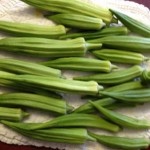
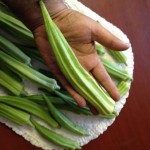
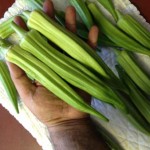
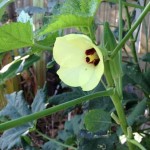
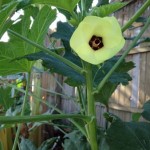
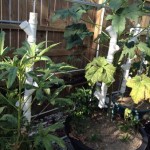
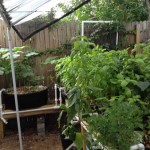
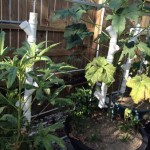
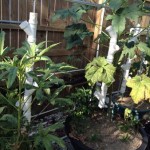



 Best Western Orlando East Inn & Suites
Best Western Orlando East Inn & Suites Crestwood Suites of Orlando-UCF Area
Crestwood Suites of Orlando-UCF Area Days Inn N Orlando/Casselberry
Days Inn N Orlando/Casselberry Park Plaza Hotel
Park Plaza Hotel Thurston House Bed and Breakfast
Thurston House Bed and Breakfast